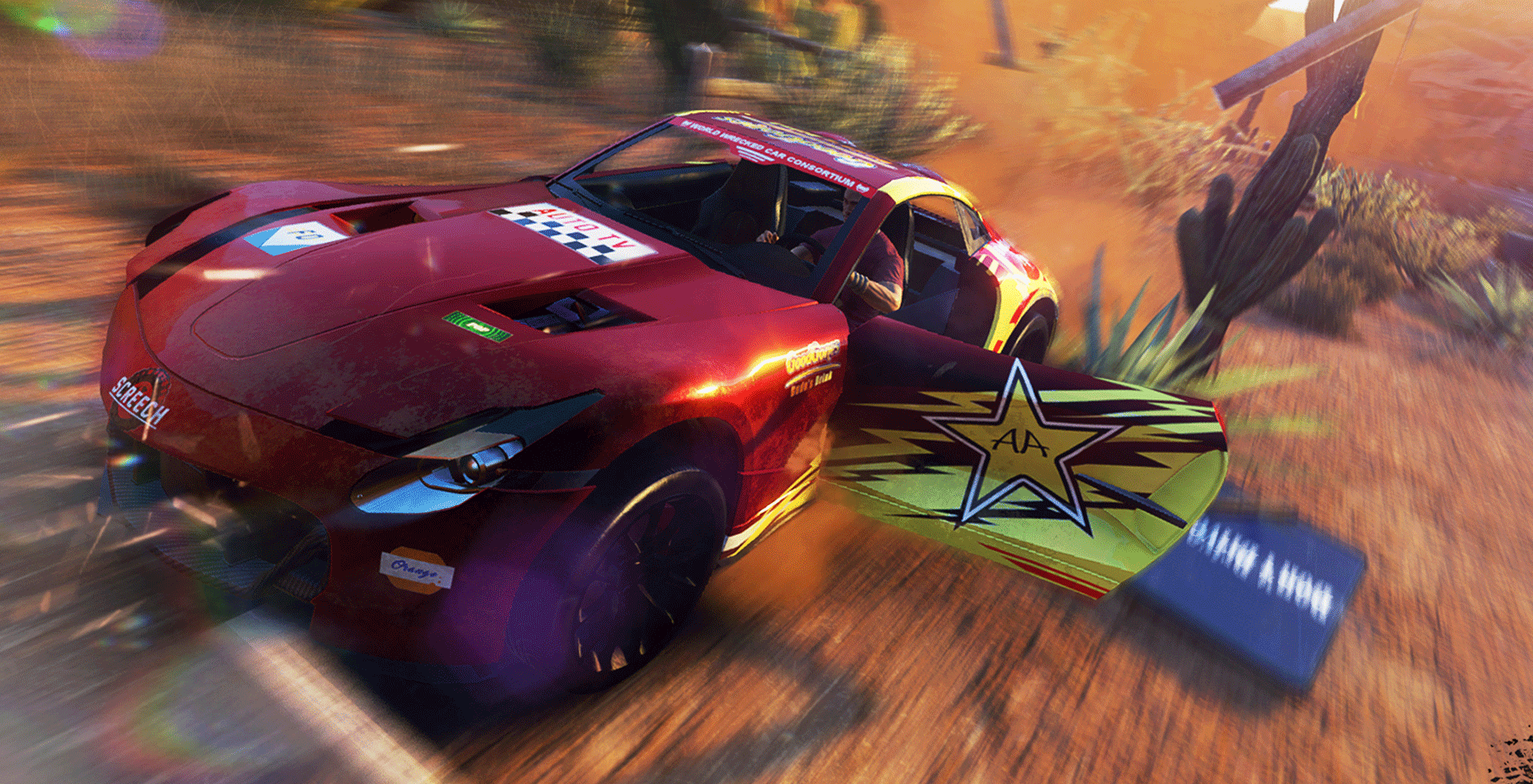It was back in 2006, maybe 2007. I was at a pretty big LAN party where a friend of mine passed me a copy of this game FlatOut, begging me to give it a try. I’d never heard of it, but exhausted of Unreal Tournament I decided to give it a go. It blew me away. I couldn’t work out how a game this great had gone completely under my radar until that point.
A decade later, FlatOut 4 appears on my console, bringing back hopeful memories of bright, bombastic racing, destruction derbies and goofy mini games. I’m sad to report that FlatOut 4: Total Insanity doesn’t live up the high standard of the earlier games, instead it’s a muted looking, frustrating misunderstanding of what made the originals great.

Developed by Kylotonn Games (whose previous notable works include WRC 5 and 6), FlatOut 4 is a destruction focused racing game. Your main single-player career mode gives you a series of events to complete in different vehicle classes, with more unlocking as you place in available events. It’s a good way to get to grips with most of the game modes, and there’s a fair amount of game here to get through. As you progress through the career you earn money to buy new vehicles and upgrade the ones you already own. It’s a tried and true career progression, and it makes sure you always have alternative races if you get stuck on one. There’s no storyline, and no characters to speak of aside from names of your opponents that show up on the leaderboard and your own bland jeans-wearing man character who occasionally flies through the windscreen.
Destruction is what separates FlatOut from your typical arcade racer, and for Total Insanity it is both a blessing and curse. Cars deform during races after collisions with opponents and the environment, making sure the impact of each crash is obvious at least visually on your vehicle. Crashes don’t affect car handling in any noticeable way though so a heavy collision or two generally won’t sound the death knell on your race. It is possible to damage your vehicle to the point it explodes and you automatically lose the race, but this doesn’t happen often. The cars you start with are old, rusty clunkers and boy howdy they feel like it. It’s unusually satisfying to see the vehicle jam into gear after stopping, a feeling uncommon to racing games.

Where the destructive element starts to bring down the experience is in how enemy AI seems to aggressively push you off the road at any opportunity. Opponents seem more interested in slowing you down than they do in winning themselves. Even the environment itself is intent on ruining things. It’s no fun to be pushing your way up the positions in the race, slowly but surely inching to first, only to have your car flip into the sky after hitting a train track or small rock on the road. Environmental crashes particularly feel unfair. In my experience I found myself often losing races because I flew off track hitting an obstacle I couldn’t see. With opposing racers so unforgiving already it was enough to put a huge damper on my desire to keep playing.
Speaking of the environments, FlatOut 4’s tracks capture their American desert theme quite well (at least, they seem to based on my experience of American desert environments coming entirely from films and television). They are full of destructible terrain. Fences, building foundations, shed doors, all there just waiting for some driver help them to fulfil their ultimate purpose of becoming flying debris. As well as deserts, there are forests, stadiums and industrial areas to bound through. It is a shame though that when comparing to early games the tone of these tracks is so dull and lifeless. The contrasting blue skies and brown roads of the original give way to a grey and generally muted look here. The soundtrack is a reasonable selection of alternative rock songs whose appeal will depend on your affinity for the genre, but by default the music is quiet enough to be drowned out by engine noises. Even the best tracks are so quiet they become droning background noise.

Aside from the standard career mode races, FlatOut’s claim to fame is it’s bizarre mini-games, aptly named FlatOut mode. Launching your driver out of the windscreen during a crash was a cosmetic thing in the racing modes, but here it’s a sport. In High Jump you throw your driver at a net, aiming as high as possible. There’s a version of beer pong where you’re launching your driver out of the car, bouncing them on a table and aiming to have them land in a cup. There’s a mode almost like a version of Boom Blox, where you need to knock down a block structure with your flying driver. There are even versions of billiards, soccer and curling to be played with the unfortunate ragdoll body of your driver. It’s silly good fun, and playable with up to eight players taking turns using a single controller in Party Mode. I don’t think these games will have much staying power. There’s a heap of variety on offer, but playing each mode a few times I found myself tiring of them pretty quickly. Still, Party Mode is a fun way to while away an evening with a bunch of friends while it lasts.
CONCLUSION
I wanted to like FlatOut 4. I had such fond memories of the first game, the sequel and even after the misstep that was FlatOut 3. I was hoping the fourth entry would be a return to the ridiculous destruction racing I enjoyed both alone and with friends earlier in the series. The short-lived but exciting FlatOut modes are great fun for a minute, but between the unexciting visuals, frustratingly unpredictable collision physics and overly aggressive AI, racing in FlatOut 4 is too hostile to be fun.
The PlayStation 4 version of this game was played for the purpose of this review. You can read our review policy HERE.



